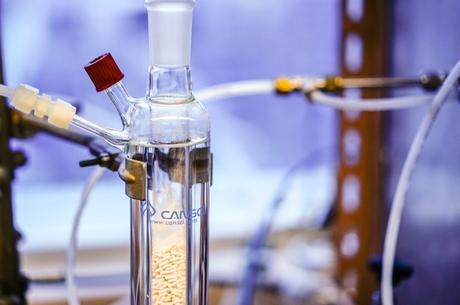
When it comes to high-performance liquid chromatography AKA HPLC, it's important to understand the types of HPLC columns that are used to test substances. As a refresher HPLC is a system that provides extremely effective substance testing that is used for biological, food and beverage, pharma, and environmental industries.
Keep reading to learn more about HPLC columns that are used when testing samples.
Anatomy of an HPLC Machine
We want to go over the anatomy of the HPLC machine before we dive deep into the types of HPLC columns. The easiest way to break down the anatomy is to understand that a pump moves a sample through the machine where it then passes through the column.
The column takes the substance and separates the compounds and tests each individual component. Once each compound is tested each sample is moved through the machine using the mobile phase. The mobile phase is a substance that carries the sample through the column.
Inside the column, there is a substance called the stationary phase that facilitates the separation. There are also these common problems that you want to understand and be aware of when working with different types of columns.
Now that you should have a better understanding of how the machine works let's go over the types of columns.
1. Normal Phase
This type of column uses polarity to separate the compounds of the sample being tested. During this phase the stationary phase is polar and the mobile phase is nonpolar.
When the sample reached the column the least polar compounds separate first and then the most polar compounds will separate. The HPLC lab technician is able to individually record and test each compound because they are extracted at different times.
These types of columns are normally used to test a range of biomolecules, organic acids, and certain drugs.
2. Reverse Phase
This phase column is similar to the normal phase column we went over above the difference is that it is the reverse of the normal phase. This column has a non-polar stationary phase and a polar mobile phase.
C8 and C18 hydrocarbons along with other non-polar hydrocarbons are used as stationary phase in reverse phase columns. Aqueous organic solutions like water-acetonitrile and water-methanol are used as mobile phase.
This column has a large range of testing options making it very popular for students enrolled in HPLC courses.
3. Ion Exchange
This column uses anionic charged ions or cationic charged ions. The anionic charged ions have a net negative charge and the cationic charged ions have a net positive charge. The lab tech chooses which charge they will use based on the sample that they are testing.
As soon as the mobile phase along with the sample enter the column it begins to respond to the charged ions. At this point, the compounds begin to separate at different rates.
Typically the ion exchange column is used to separate proteins, carbohydrates, and amino acids. This type of column is very popular for the food and beverage industry.
4. Size Exclusion
This type of column is mainly used to test proteins and carbohydrates. This type of column is different from the rest because it does not rely on the interaction of the stationary phase, the mobile phase, and the sample in order to separate the sample itself.
The sample is filtered through a material that has different pore sizes and this is when it is separated. The pores in this column are made up of micropores and mesopores.
The micropores have a diameter of less than two nanometres. The mesopores have a diameter anywhere between two and fifty nanometres.
Keep in mind that the ability for the compound to pass through the different sized pores will be different for each one based on size. The larger compounds will have the ability to pass quickly because they will not go through the holes.
The smaller compounds, on the other hand, will fit through the holes and therefore will take longer.
Column Lengths
Once you choose the appropriate column type for your sample you want to take the column length into consideration. The length you opt for will depend on your separation mode and the samples you are testing.
A general rule of thumb is the longer the column then the longer it takes to run the samples. The longer the process takes it also means that it yields better separations.
When picking the column lengths you want to choose one that will give you a good balance between the resolution and the analysis time. You want to avoid making the mistake of choosing a column solely based on what you are familiar with from previous experiments you conducted. You truly want to choose the appropriate length based on the type of experiment you will be conducting and sampling.
The column length is important when separating the proteins according to their size. For example, high-resolution SEC of proteins you can go for a larger column length such as 300mm.
Feeling Like an HPLC Columns Pro?
Now you should have a better understanding of how an HPLC machine works and the different types of HPLC columns. All the HPLC columns have a different length that can vary from 30mm to 250mm. The compound that is used is chosen based on the nature of the compound that will be analyzed.
Did you find this article helpful? Don't forget to bookmark our site and check back often to stay in the know!
